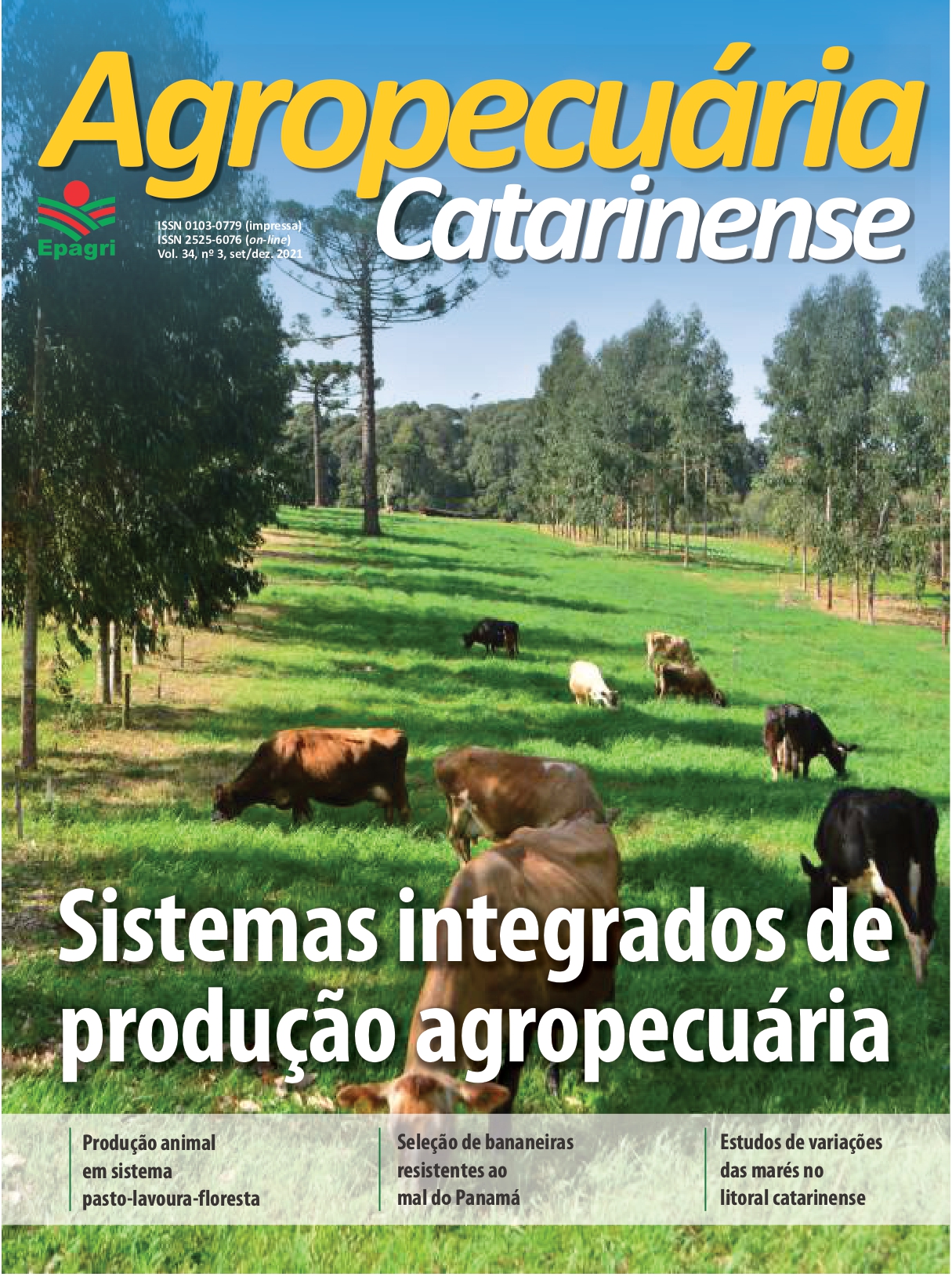Genetic characterization of fermentation yeasts as an element of geographical indication of ‘cachaça’ and ‘aguardente’ from Luiz Alves, SC
DOI:
https://doi.org/10.52945/rac.v34i3.1104Keywords:
Geographic identification, molecular markers, genetic differentiationAbstract
The municipality of Luiz Alves/SC maintains familiar traditions of ‘cachaça’ and ‘aguardente’ production by artisanal alembics, demanding Geographic Identification processes for the valorization of local products and protection of associated traditional knowledge. Aiming to subsidize the Geographical Identification of the products, the objective of this work was to characterize, by molecular basis, the native yeasts used by six alembics in the region. Analysis of three genomic regions (ITS, LSU and interdelta) were performed for comparison with the commercial yeast UFLA CA-11. Despite the similarity (BLAST) of the LSU/ITS sequences of all yeasts with Saccharomyces cerevisiae, both phylogenetic inferences and principal component analyzes recovered important genetic differentiation in relation to commercial yeast, along with the uniqueness between samples from different establishments. The results present herein are pioneering in molecular characterization of yeasts used in production processes of cachaça in SC aiming Geographic Identification of Luiz Alves products and highlights the potential use of those molecular markers in the process.Metrics
Publication Facts
Reviewer profiles N/A
Author statements
- Academic society
- Epagri - Revista Agropecuária Catarinense
- Publisher
- Empresa de Pesquisa Agropecuária e Extensão Rural de Santa Catarina - Epagri
References
ARAÚJO, T.M., SOUZA, M.T.; DINIZ, R.H.S.; YAMAKAWA, C.K.; SOARES, L.B.; LENCZAK, J.L.; DE CASTRO OLIVEIRA, J.V.; GOLDMAN, G.H.; BARBOSA, E.A.; CAMPOS, A.C.S.; CASTRO, I.M.; BRANDÃO, R.L. Cachaça yeast strains: alternative starters to produce beer and bioethanol. Antonie van Leeuwenhoek, v.111 n.10, p.1749-66, 2018. DOI: https://doi.org/10.1007/s10482-018-1063-3
BARBOSA, E.A.; SOUZA, M.T.; DINIZ, R.H.S.; GODOY-SANTOS, F.; FARIA-OLIVEIRA, F.; CORREA, L.F.M.; ALVAREZ, F.; COUTRIM, M.X.; AFONSO, R.J.D.C.F.; CASTRO, I.D.M.; BRANDÃO, R.L. Quality improvement and geographical indication of cachaça (Brazilian spirit) by using locally selected yeast strains. Journal of Applied Microbiology, v.121, n.4, p.1038–1051, 2016. DOI: https://doi.org/10.1111/jam.13216
BADOTTI, F.; BELLOCH, C.; ROSA, C.A.; BARRIO, E.; QUEROL, A. Physiological and molecular characterisation of Saccharomyces cerevisiae cachaça strains isolated from different geographic regions in Brazil. World Journal of Microbiology and Biotechnology, v.26, n.4, p.579-587, 2010.
BRASIL. Presidência da República. Casa Civil. Decreto nº 6.871, de 4 de junho de 2009. Brasília, DF, 2009.
FERREIRA-D’SILVA, A.; BADOTTI, F.; PINHEIRO, C.S.R.; GONÇALVES, C.M.; HUGHES, F.M.; GÓES-NETO, A.; UETANABARO, A.P.T. Diversity of Saccharomyces cerevisiae strains isolated of the spontaneous fermentation of cachaça from northeastern Brazil. Brazilian Journal of Development, v.5, n.11, p.27448-2746, 2019.
HAMMER, Ø.; HARPER, D.; RYAN, P.D. Past: paleontological statistics software package for education and data analysis. Palaeontologia Electronica, v.4, p.1-4, 2001.
HOANG, M.T.V.; IRINYI, L.; CHEN, S.C.A.; SORRELL, T.C.; THE ISHAM BARCODING OF MEDICAL FUNGI WORKING GROUP; MEYER, W. Dual DNA Barcoding for the Molecular Identification of the Agents of Invasive Fungal Infections. Frontiers in Microbiology, v.10, n.1647, 2019. DOI: https://doi.org/10.3389/fmicb.2019.01647
Downloads
Published
How to Cite
Issue
Section
License
Copyright (c) 2021 Valdir Marcos Stefenon, Bruna Ronchi Hermann, Julia Zappelini, Milena Martins Machado

This work is licensed under a Creative Commons Attribution 4.0 International License.





